Precalculus Chapter 3 Quiz
Submit your answers by midnight, Wednesday, March 18.
Multiple Choice
Identify the choice that best completes the statement or answers the question.
____1. Determine the end behavior of


____ 2. Determine the end behavior

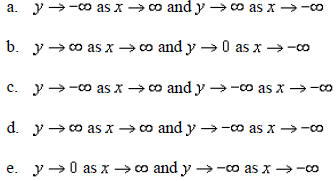
____ 3. Sketch the graph of the function P(x) = (x – 3)(x + 4).
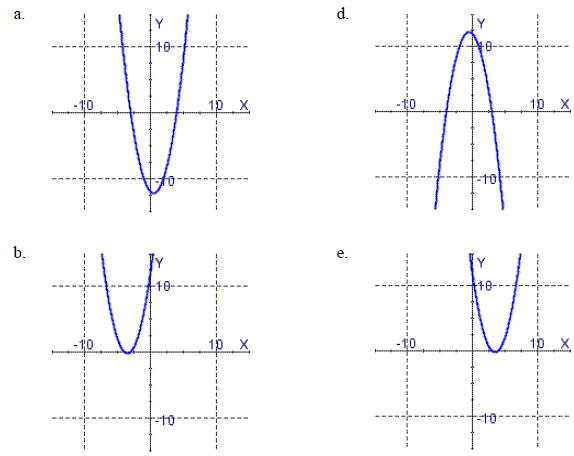
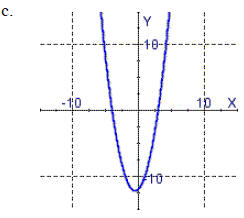
____ 4. Sketch the graph of the function
 .
.
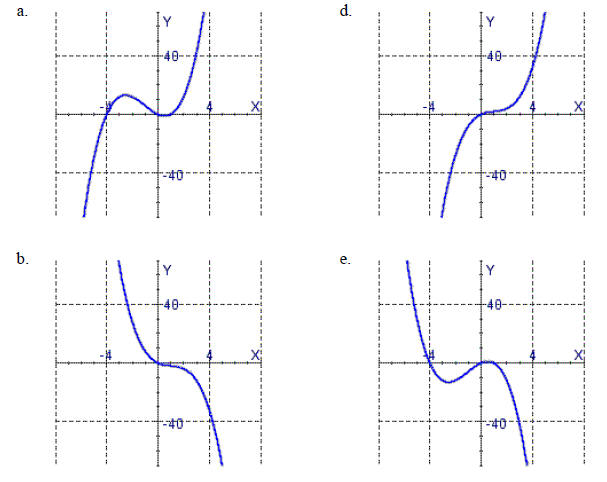
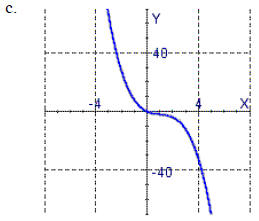
____ 5. Sketch the graph of the function
 .
.
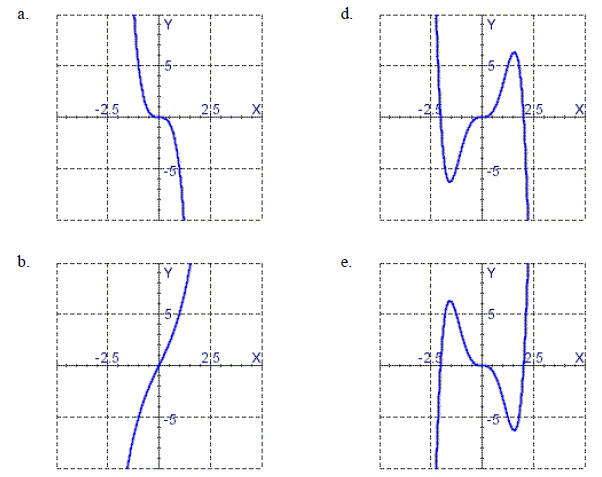
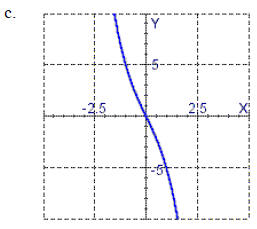
____ 6. Determine the end behavior of the graph of the
function 
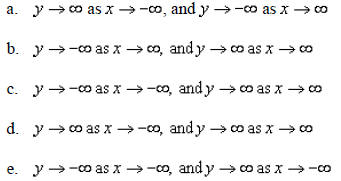
____ 7. The graph of a polynomial function is given.
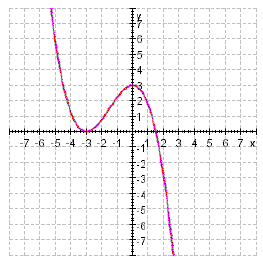
From this graph, find the coordinates of all local extrema:
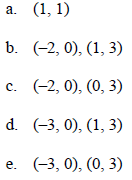
____ 8. The graph of a polynomial function is given.
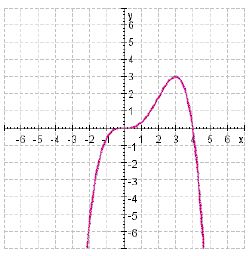
From this graph, find the coordinates of all local extrema:

____ 9. Find the coordinates of the local extrema of the function y = x2 – 10x.

____ 10. How many local maxima and minima does the polynomial y = x 4 – 4x2 + 4 have?
a.
1 maximum and 0 minima
b.
0 maxima and 2 minima
c.
1 maximum and 2 minima
d.
2 maxima and 1 minimum
e.
1 maximum and 1 minimum
____ 11. Find the x-coordinates of all the intersection
points on a graph of the two functions,
y = x 3 – 5x 2 – 2x + 8 and y = –x 2 + 3x + 8.

____ 12. What is the largest product A and B can have, given that 2A + 5B = 100 ?

____ 13. An open rectangular box is to be constructed from
a piece of cardboard a = 14 cm by b = 43 cm, by cutting
squares of length x from
each corner and folding up the sides, as shown in the figure.

What is the maximum volume to the nearest centimeter of such a box?

____ 14. Divide  by
by
 and express
and express
 in the form
in the form
 , with:
, with:
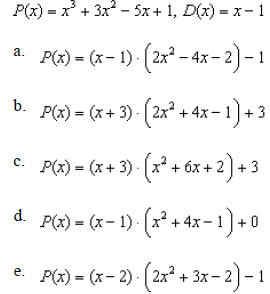
____ 15. Find the quotient and remainder using long
division:
a.
no solution given
b.
The quotient is  ; the remainder is 1.
; the remainder is 1.
c.
The quotient is ; the remainder is 3.
; the remainder is 3.
d.
The quotient is  ; the remainder is –41.
; the remainder is –41.
e.
The quotient is  ; the remainder is –38.
; the remainder is –38.
____ 16. Find the quotient and remainder using long
division: 
a.
no solution given
b.
The quotient is  ; the remainder is
; the remainder is  .
.
c.
The quotient is  ; the remainder is
; the remainder is  .
.
d.
The quotient is  ; the remainder is
; the remainder is
 .
.
e.
The quotient is  ; the remainder is
; the remainder is  .
.
____ 17. Find the quotient and remainder using long
division: 
a.
The quotient is  ; the remainder is 0.
; the remainder is 0.
b.
The quotient is  ; the remainder is 0.
; the remainder is 0.
c.
The quotient is  ; the remainder is 0.
; the remainder is 0.
d.
The quotient is  ; the remainder is 0.
; the remainder is 0.
e.
The quotient is  ; the remainder is 0.
; the remainder is 0.
____ 18. Find the quotient and remainder using synthetic
division: 
a.
The quotient is 5; the remainder is  .
.
b.
The quotient is  ; the remainder is 5.
; the remainder is 5.
c.
The quotient is  ; the remainder is 5.
; the remainder is 5.
d.
The quotient is 5; the remainder is 
e.
The quotient is  ; the remainder is 5
; the remainder is 5
____ 19. Find the quotient and remainder using synthetic
division: 
a.
The quotient is  ; the remainder is 5.
; the remainder is 5.
b.
The quotient is  ; the remainder is –5.
; the remainder is –5.
c.
The quotient is  ;the remainder is –5.
;the remainder is –5.
d.
The quotient is  ; the remainder is 5.
; the remainder is 5.
e.
The quotient is  the remainder is 5
the remainder is 5
____ 20. Find the quotient and remainder using synthetic
division:
a.
The quotient is  the remainder is 1.
the remainder is 1.
b.
The quotient is  the remainder is –1.
the remainder is –1.
c.
The quotient is  the remainder is –1.
the remainder is –1.
d.
The quotient is  the remainder is 1.
the remainder is 1.
e.
The quotient is  the remainder is –1.
the remainder is –1.
____ 21. Find a polynomial of degree 3 that has zeros of
2, –4, and 4, and where the coefficient of  is 6.
is 6.
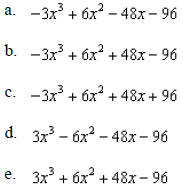
____ 22. List all possible rational zeros given by the
Rational Zeros Theorem (but don't check to see which actually are
zeros):
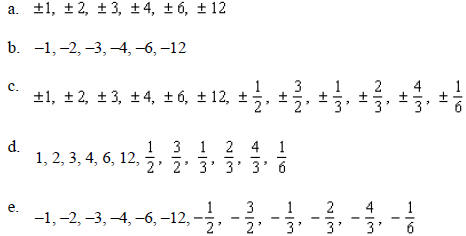
____ 23. Use Descartes' Rule of Signs to determine how
many positive and how many negative real zeros the
polynomial can have. Then
determine the possible total number of real zeros:
a.
1 positive, 1 negative
b.
1 negative
c.
3 negative
d.
0 or 2 positive
e.
1 or 3 positive
____ 24. Find all the real zeros of
 Sketch the graph of P.
Sketch the graph of P.

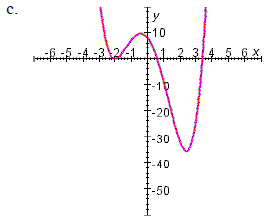
____ 25. Find all rational zeros of the polynomial 

____ 26. Find all rational zeros of the polynomial


____ 27. Find all rational zeros of the polynomial


____ 28. Find all rational zeros of the polynomial




